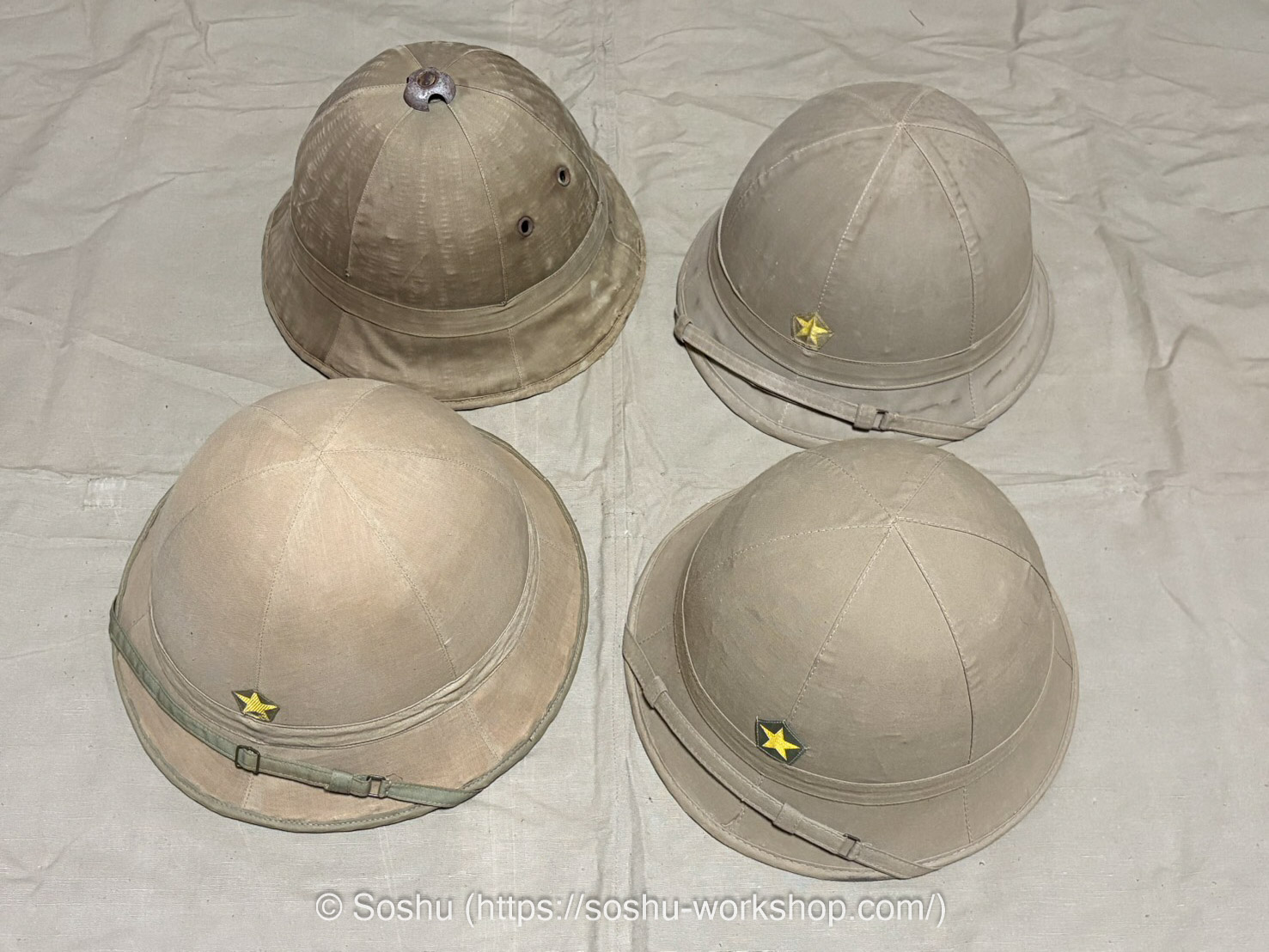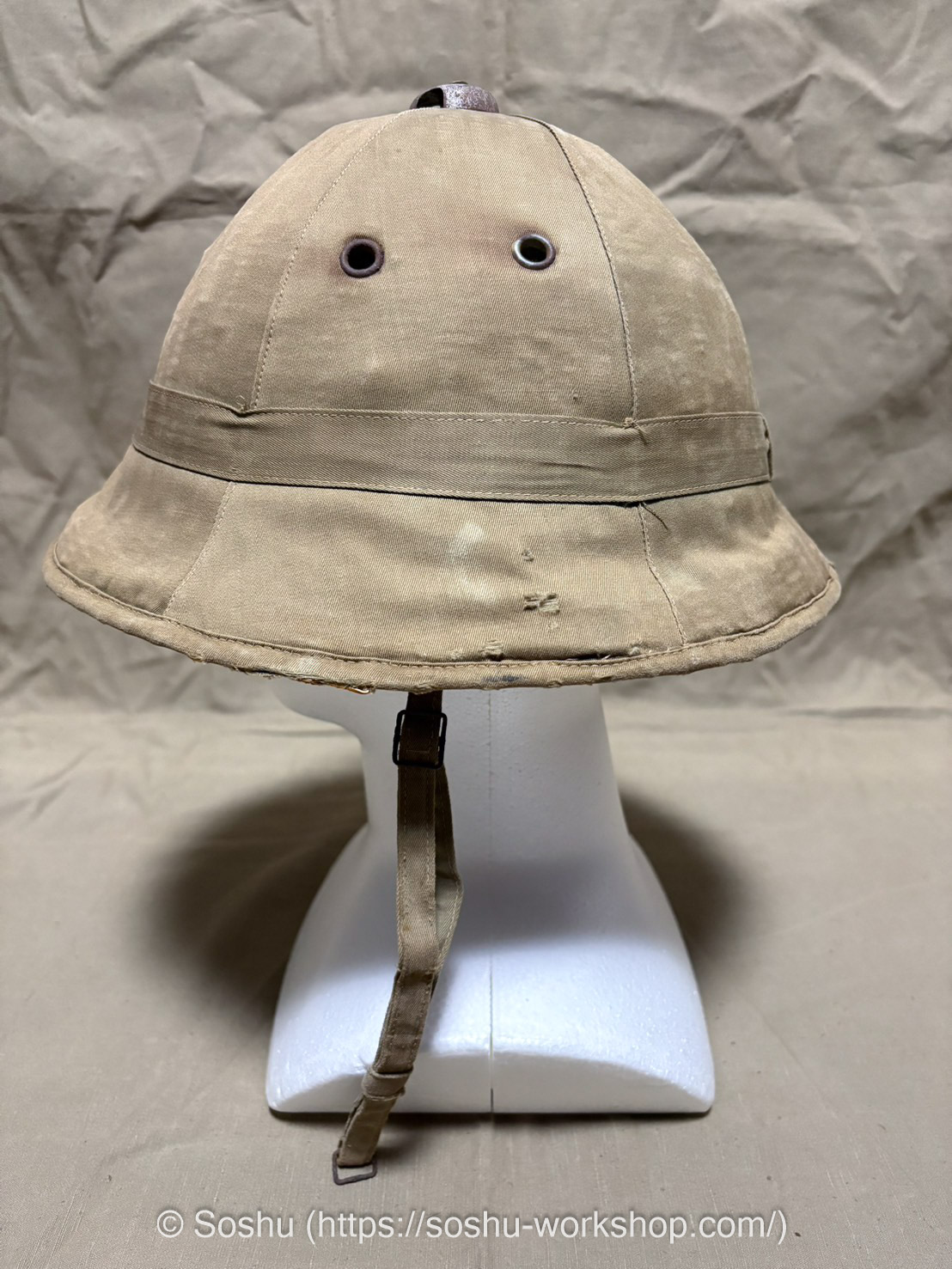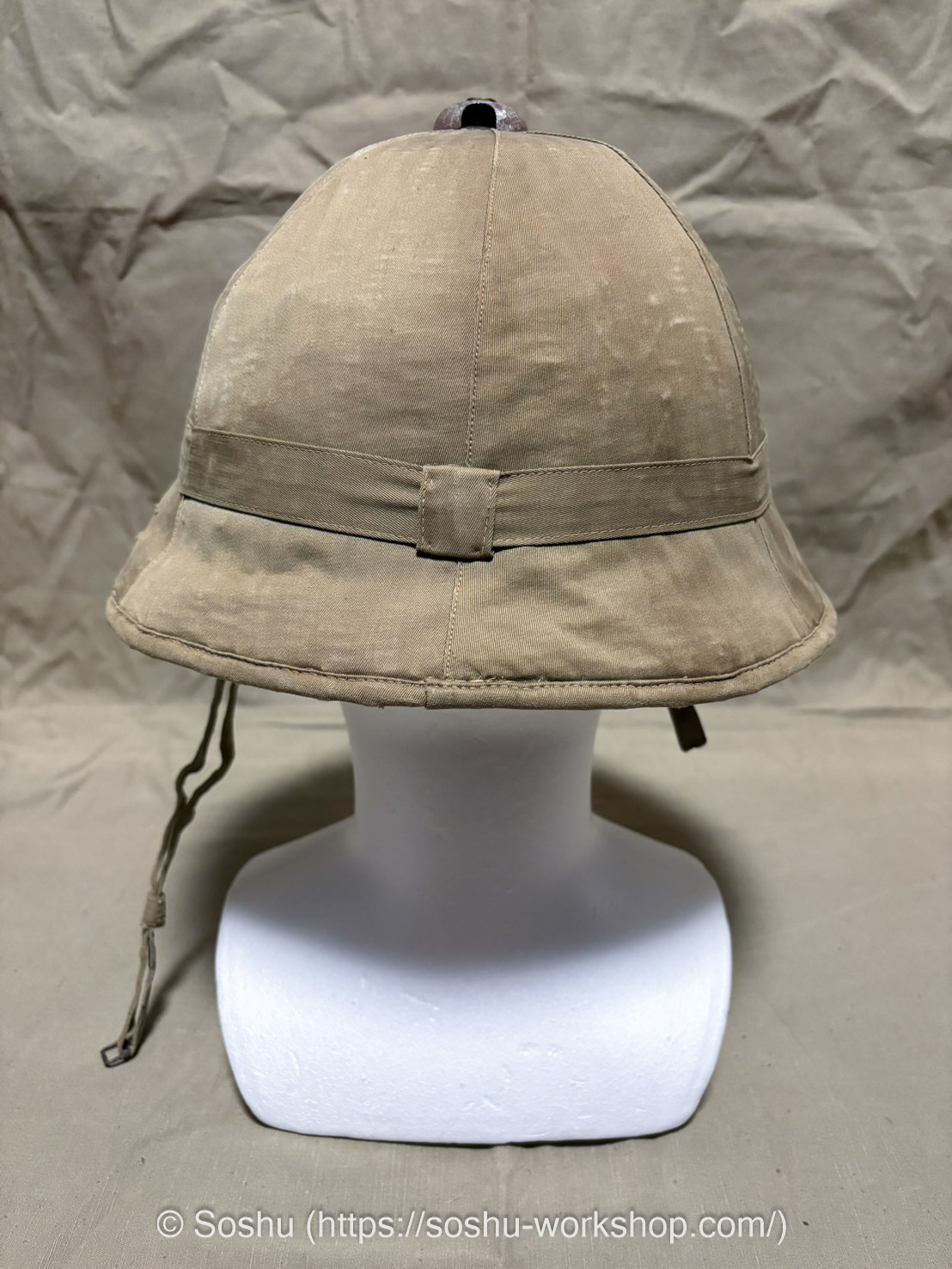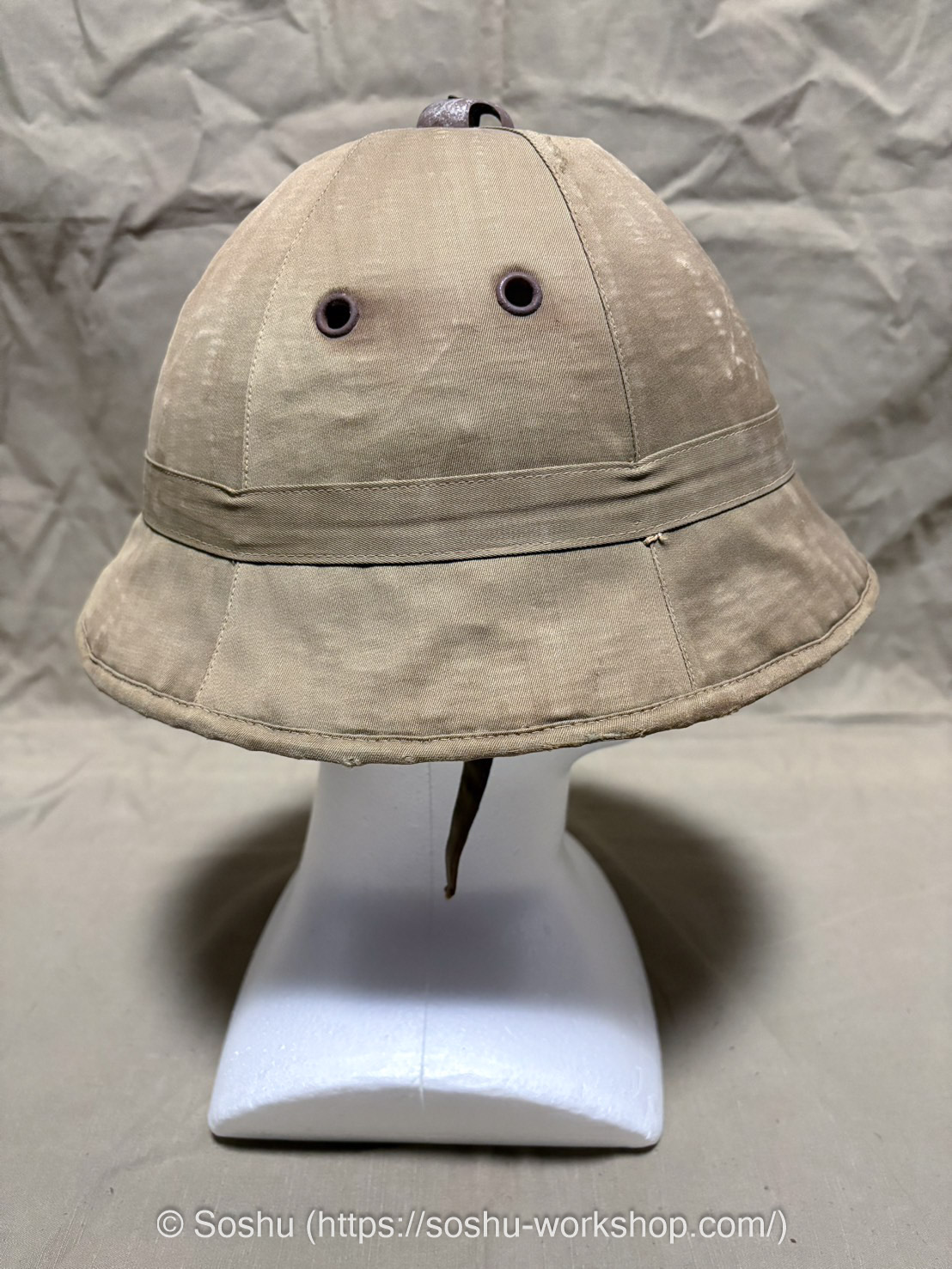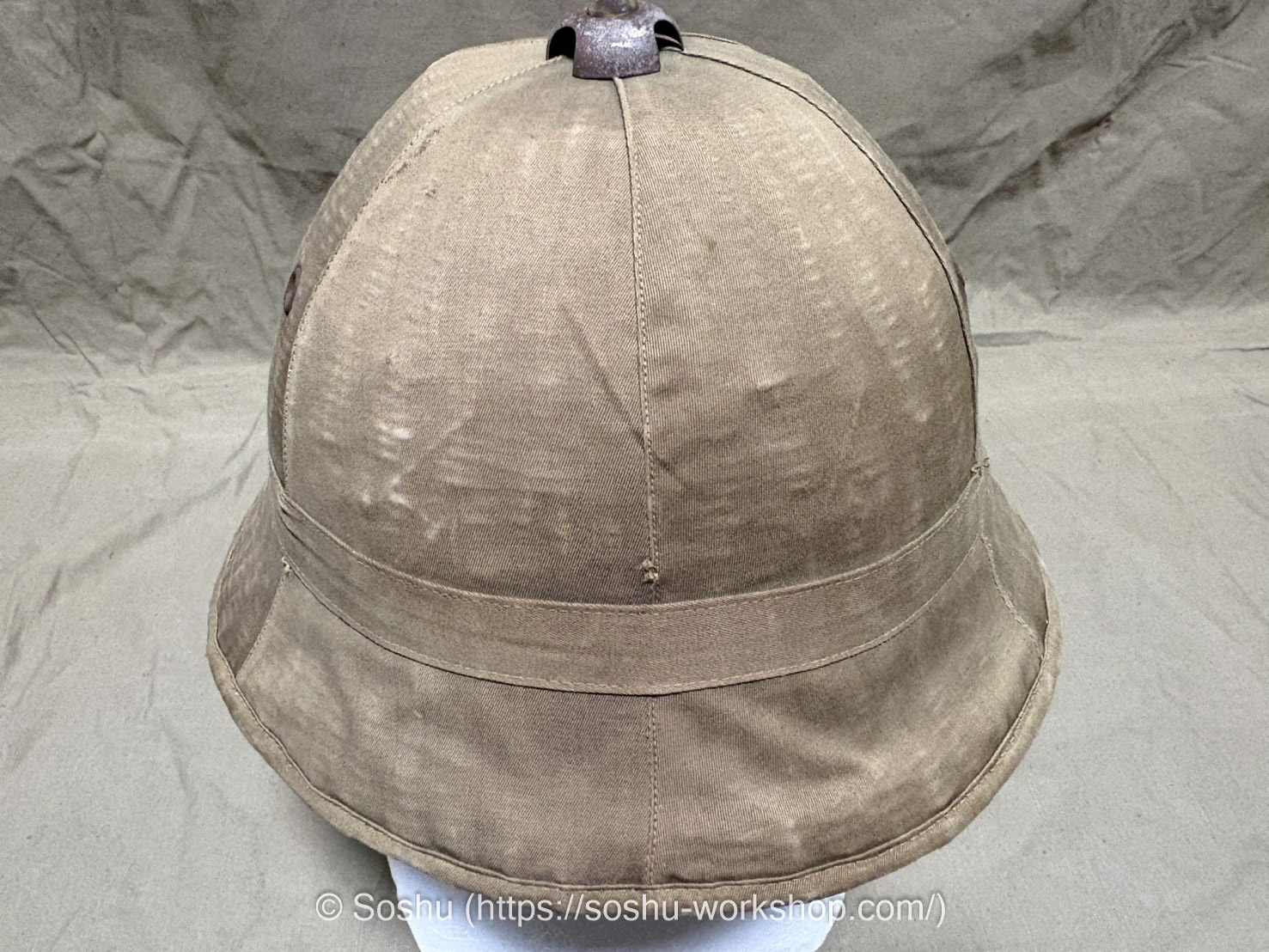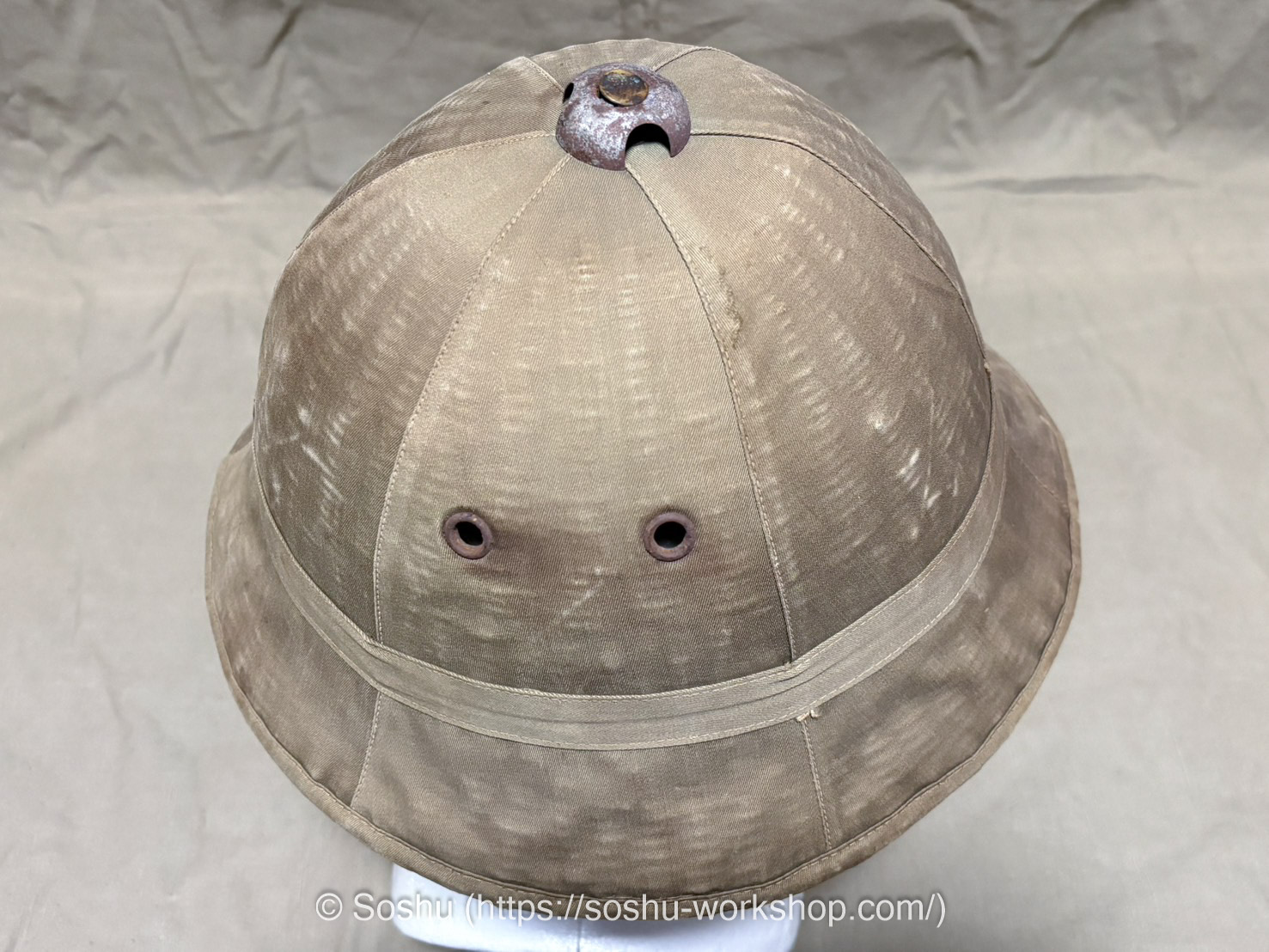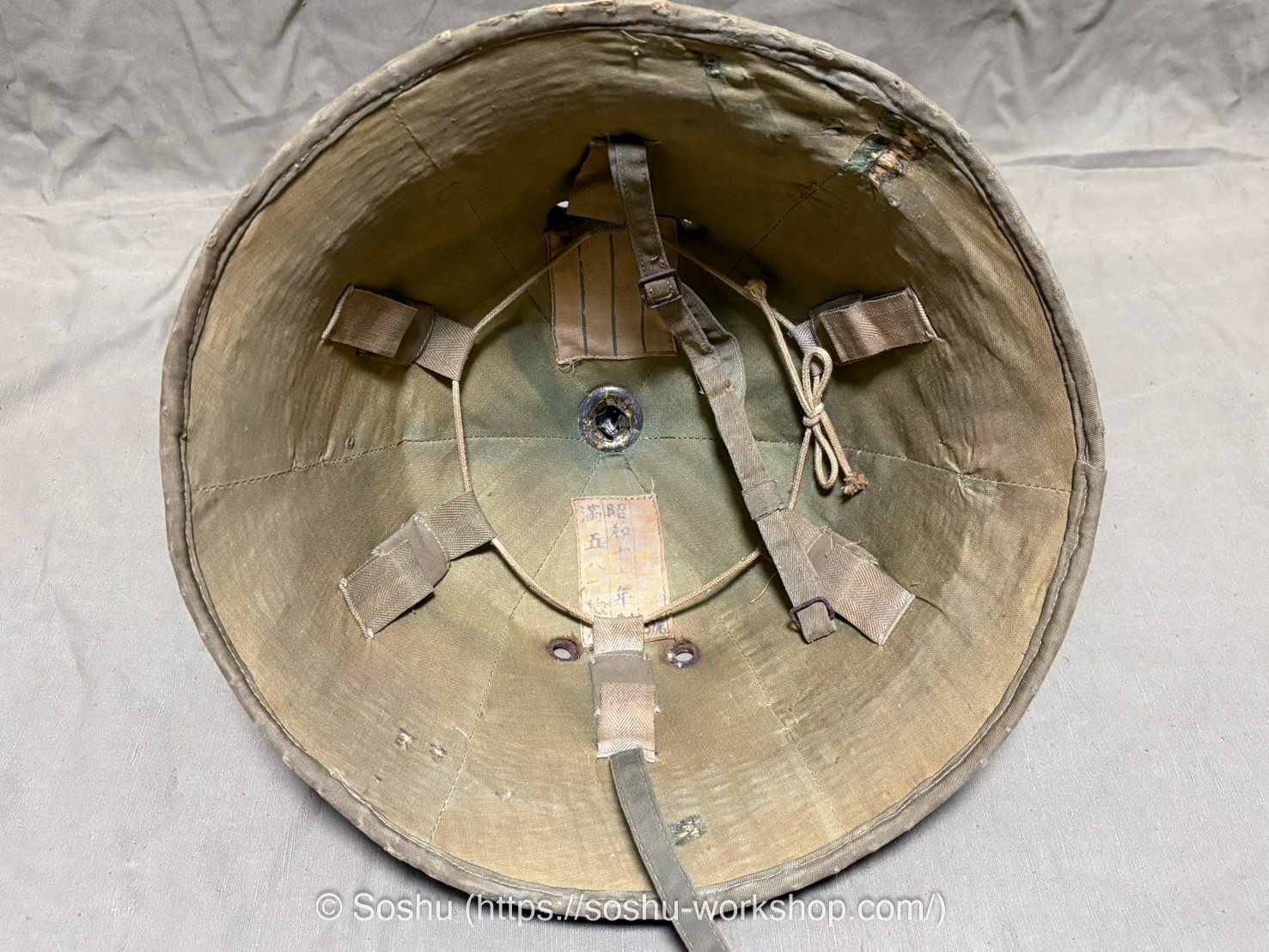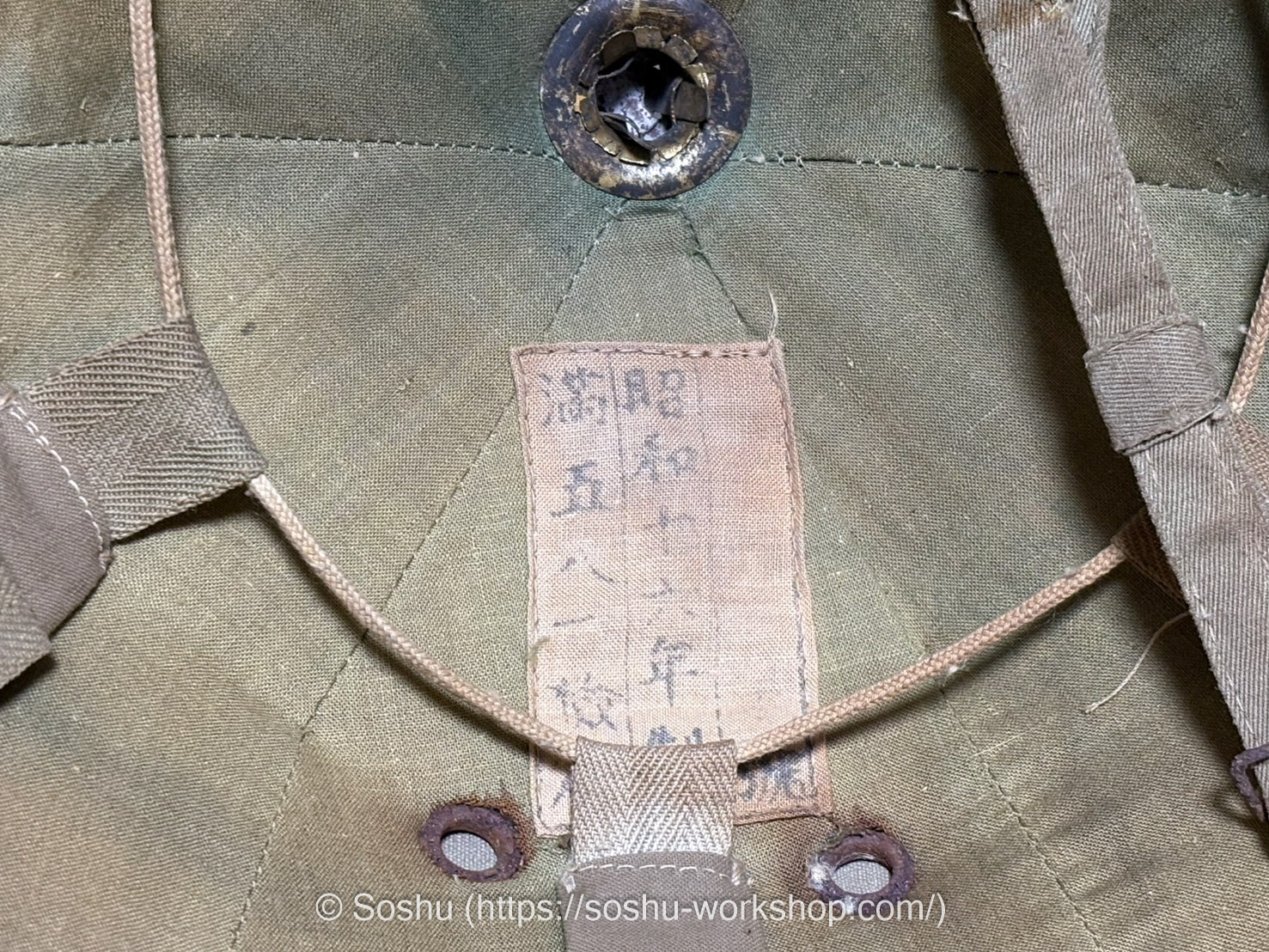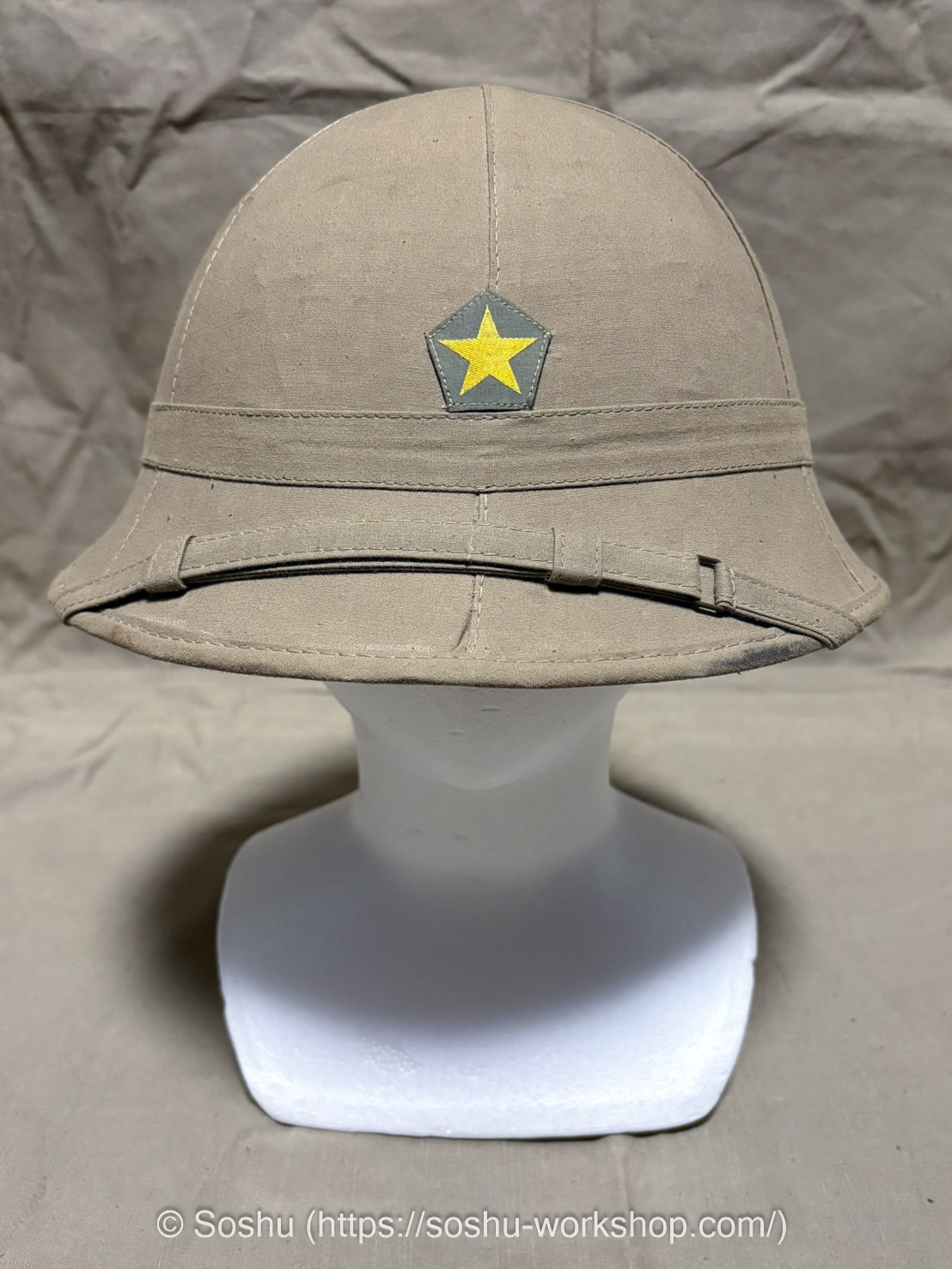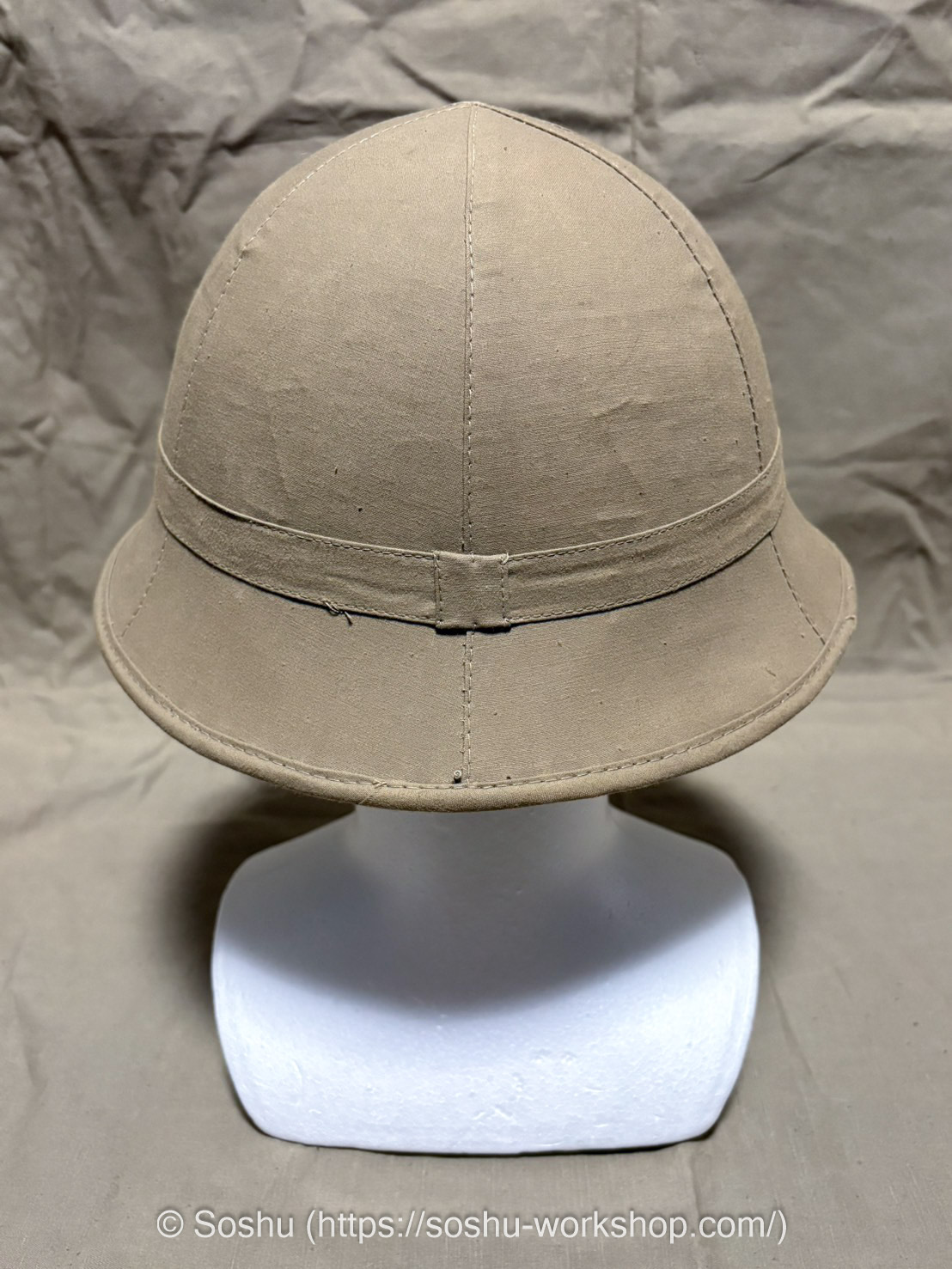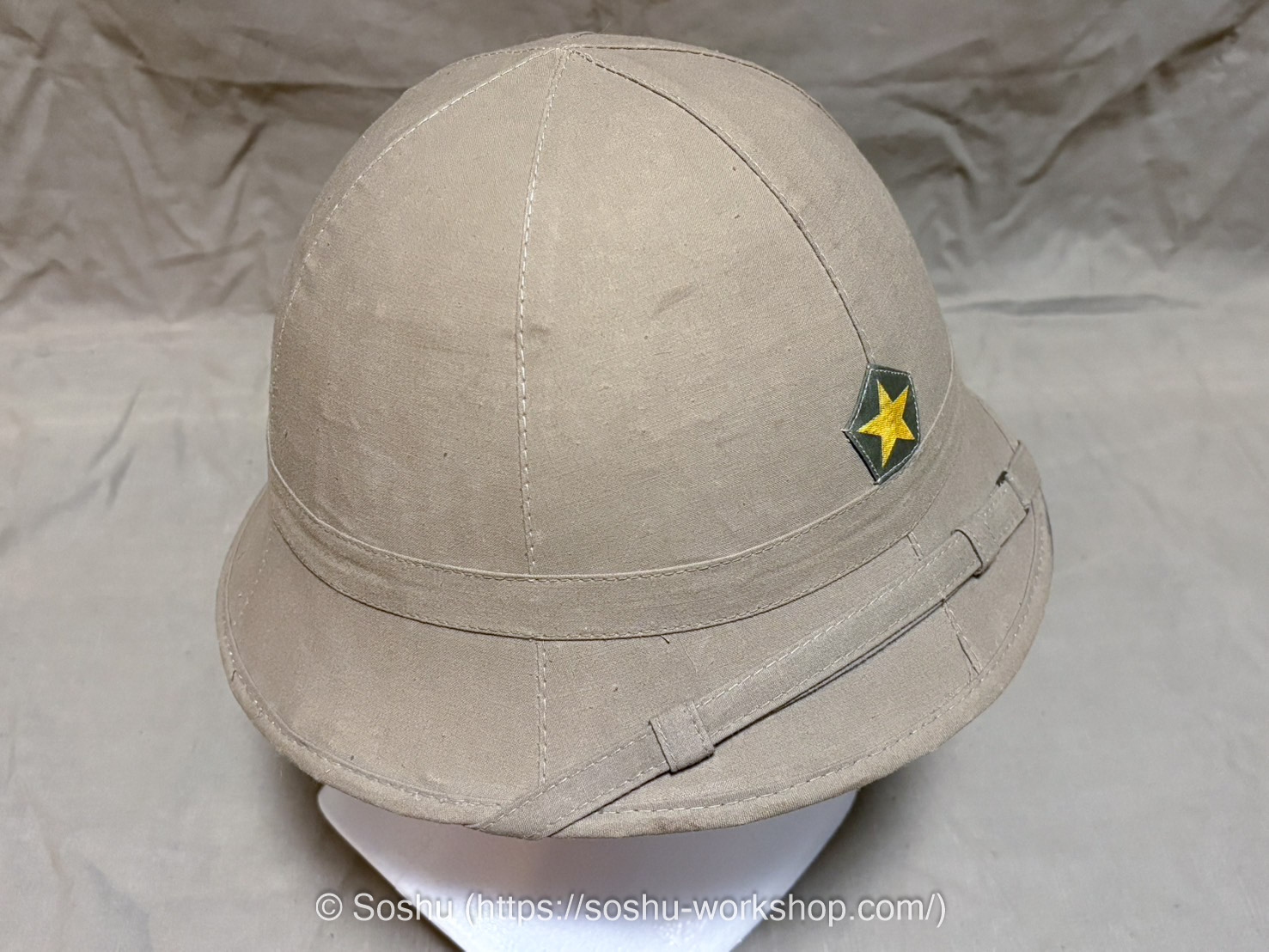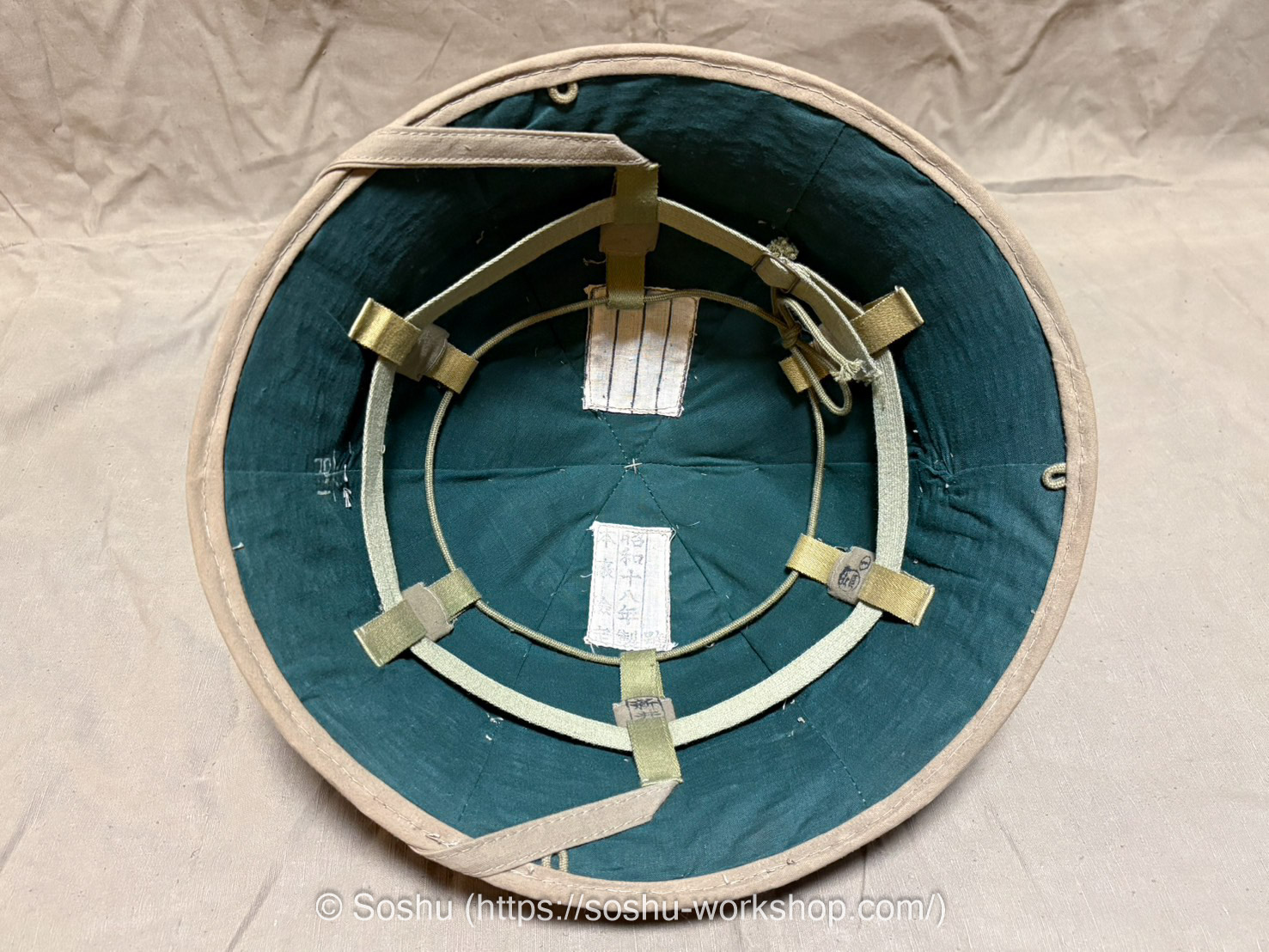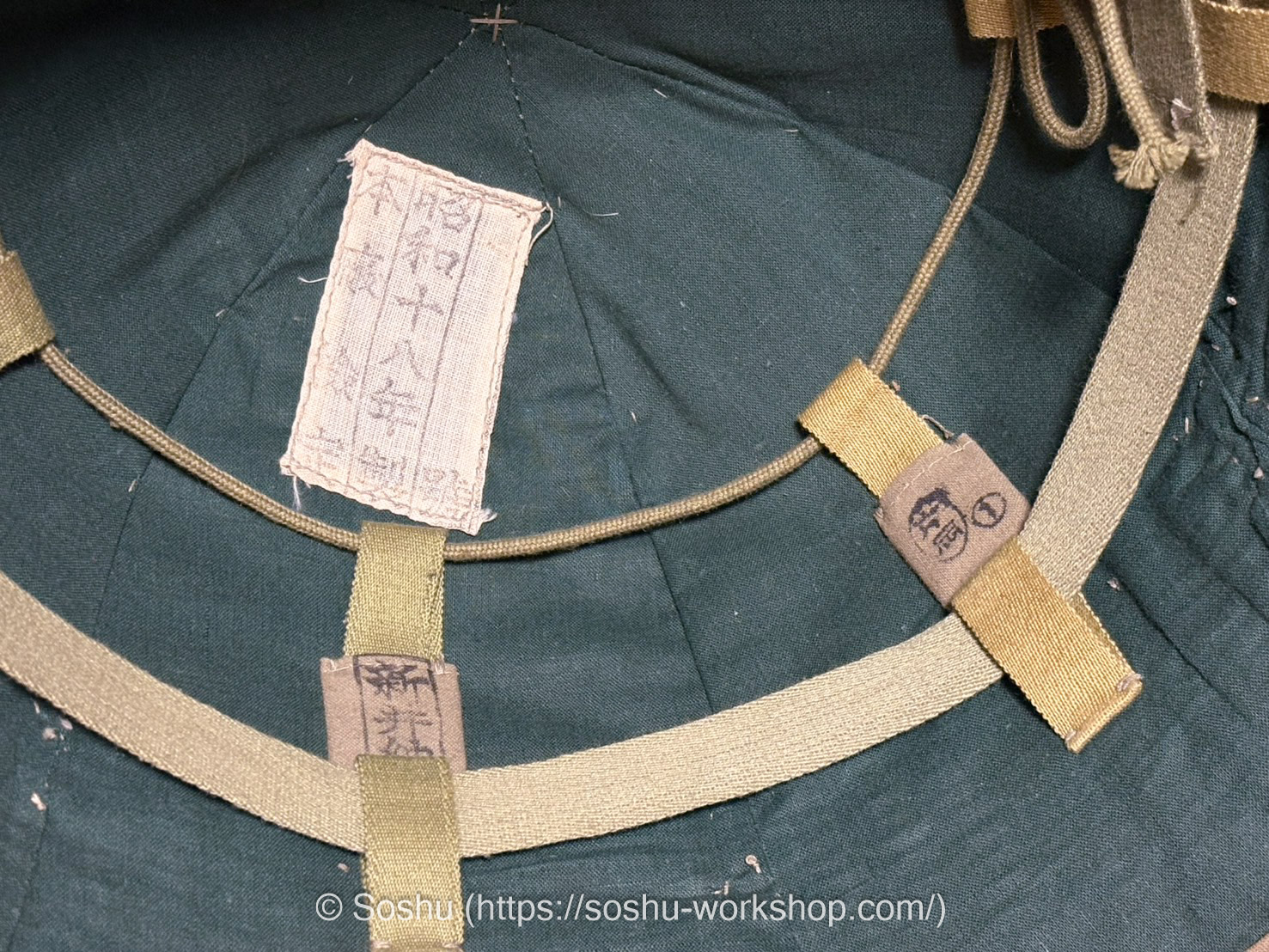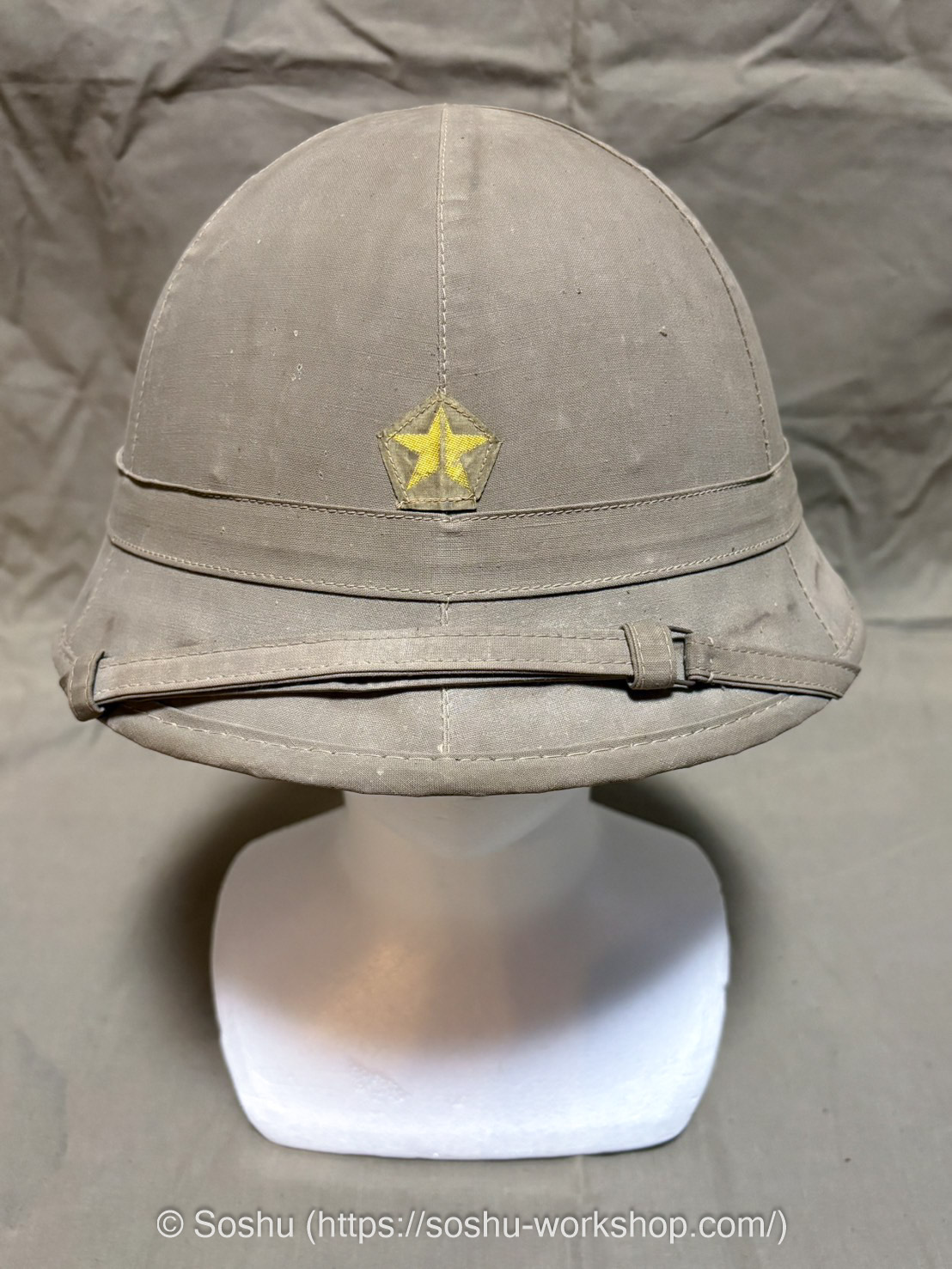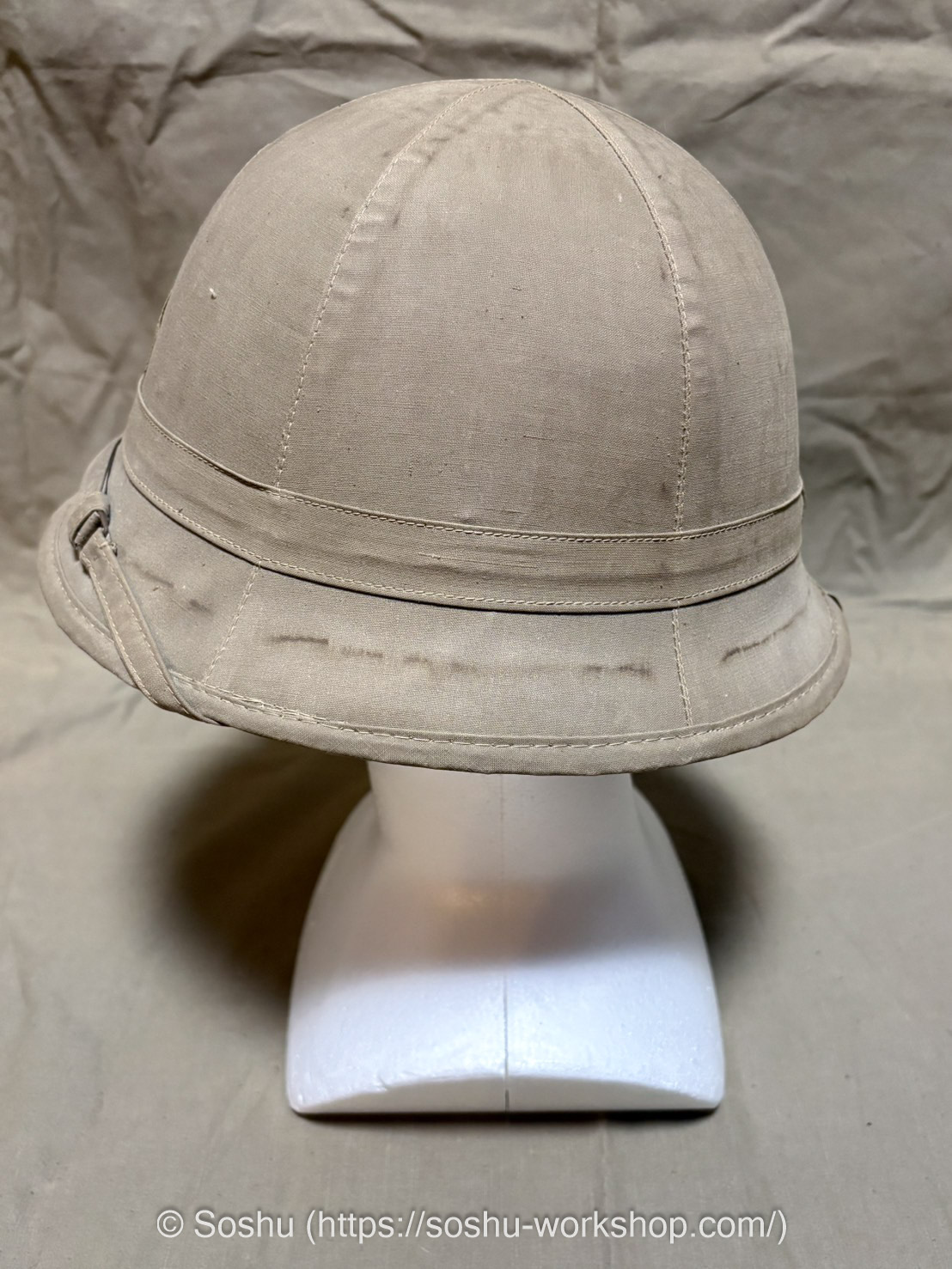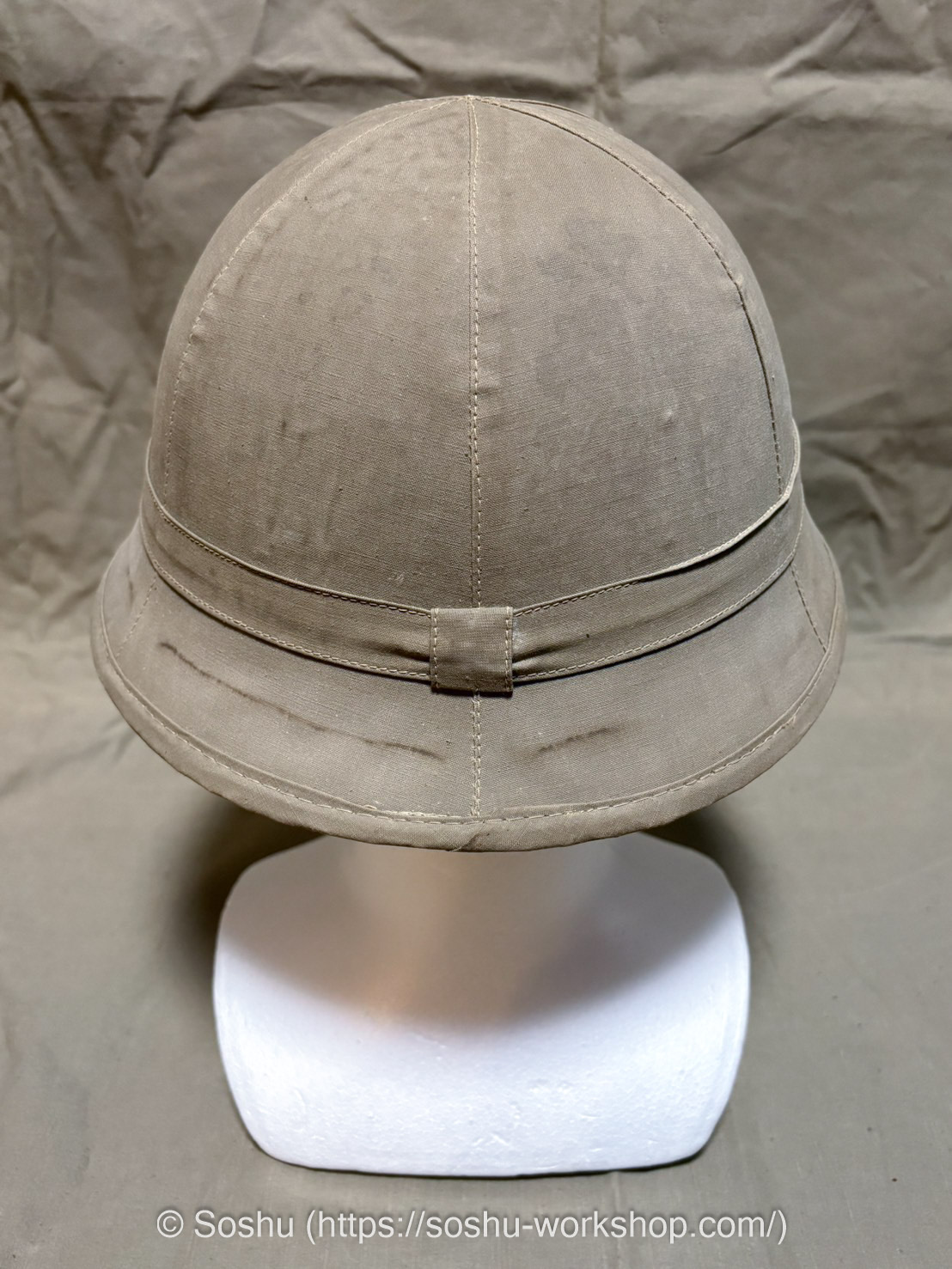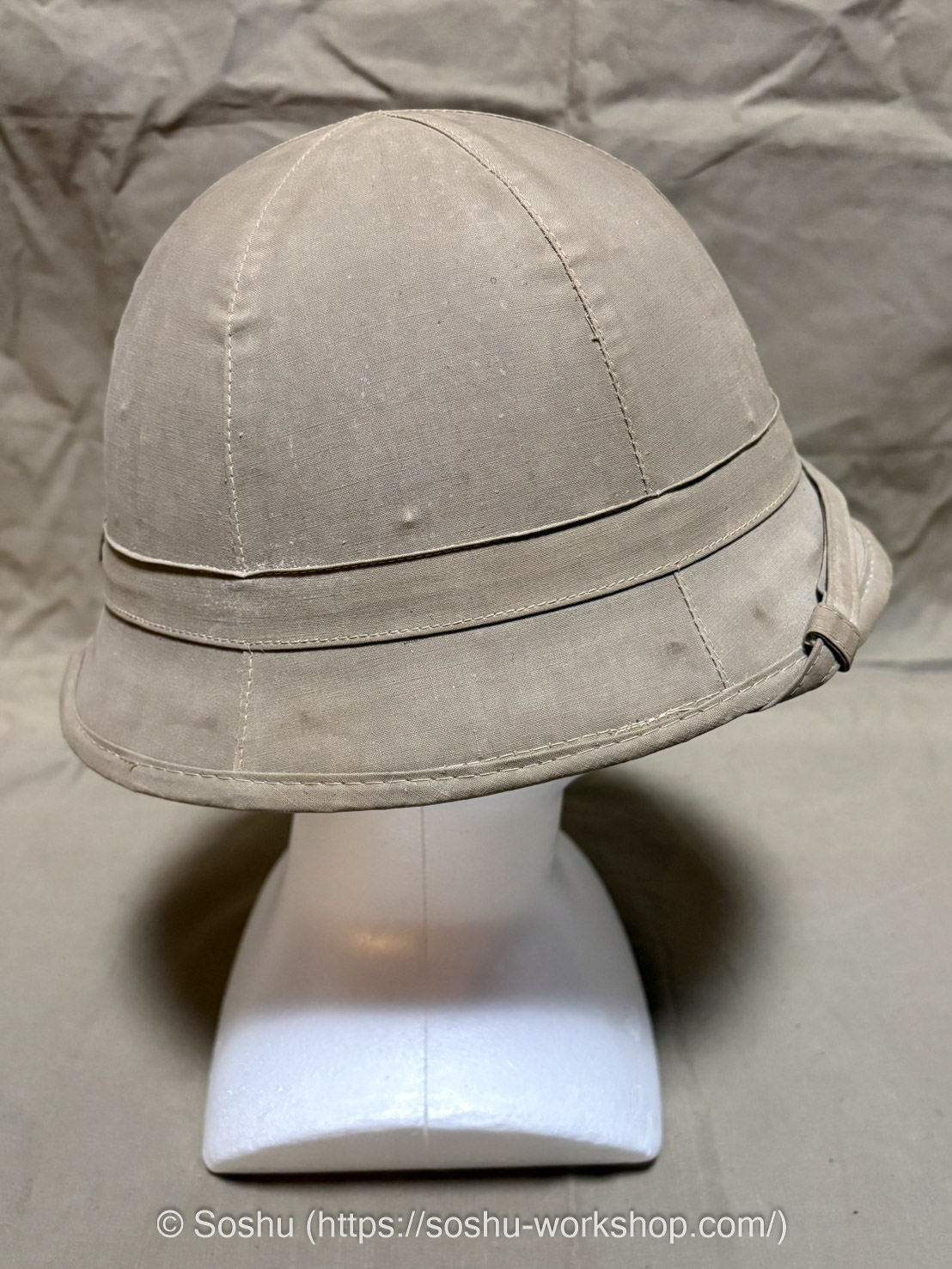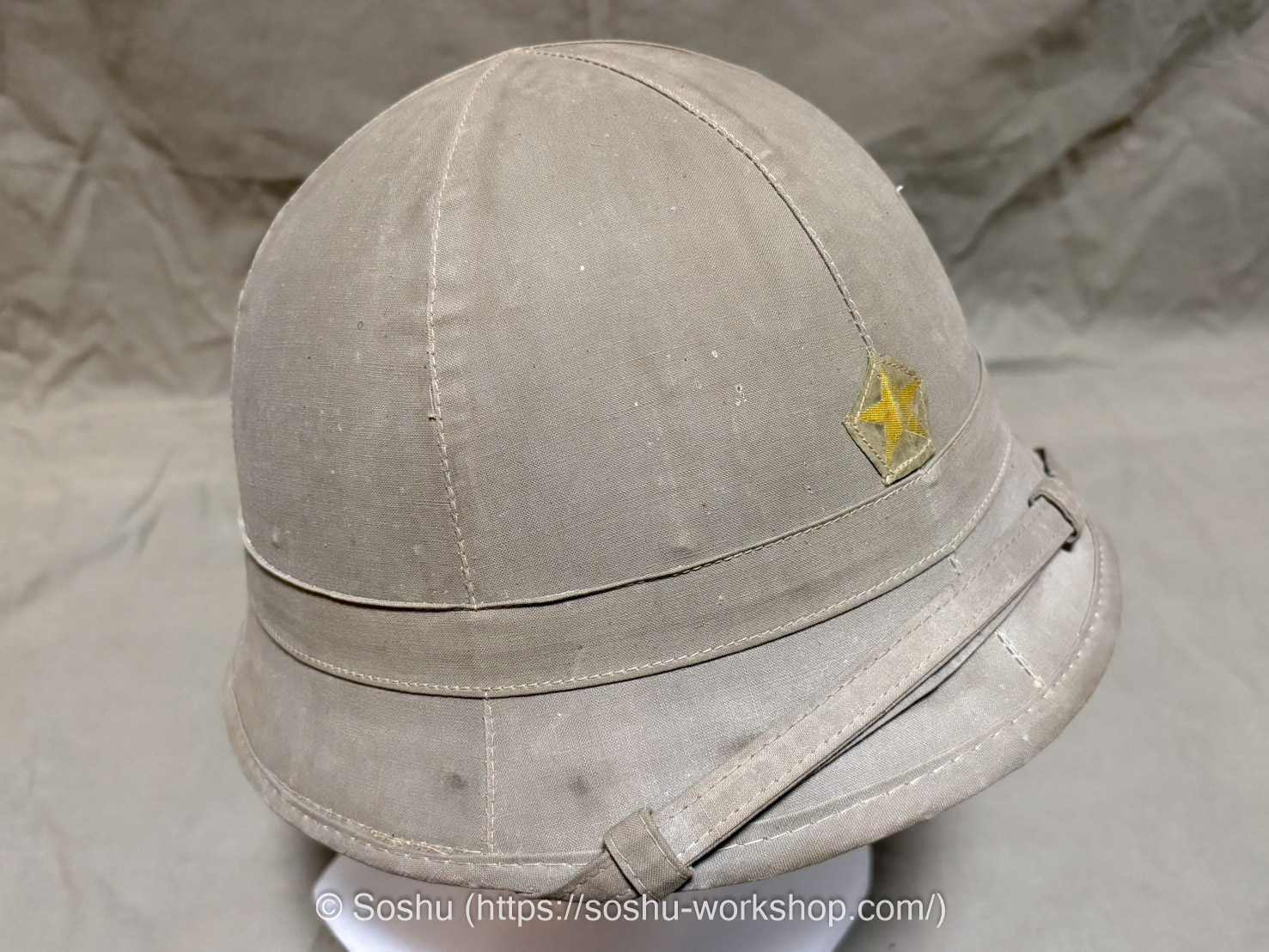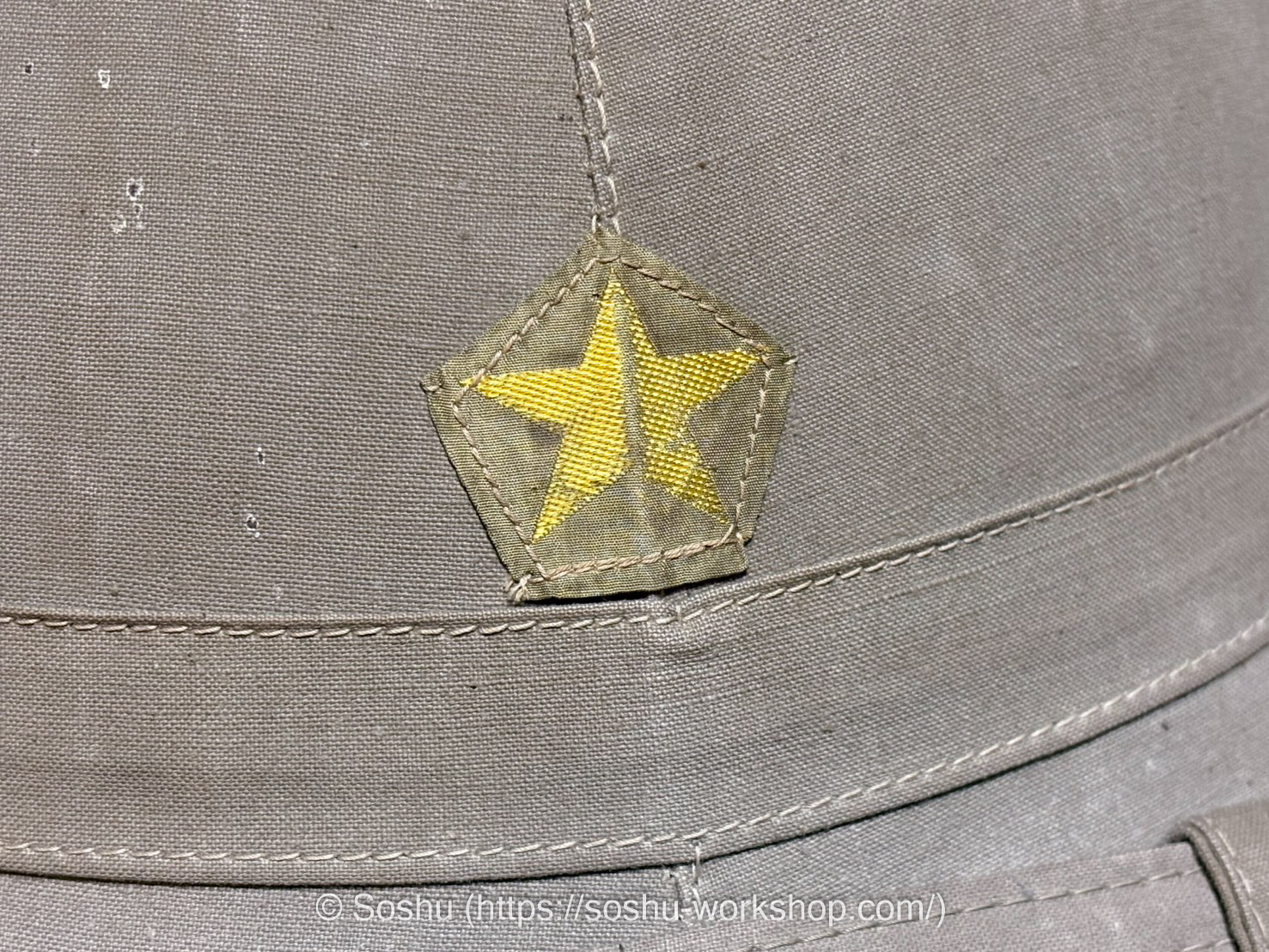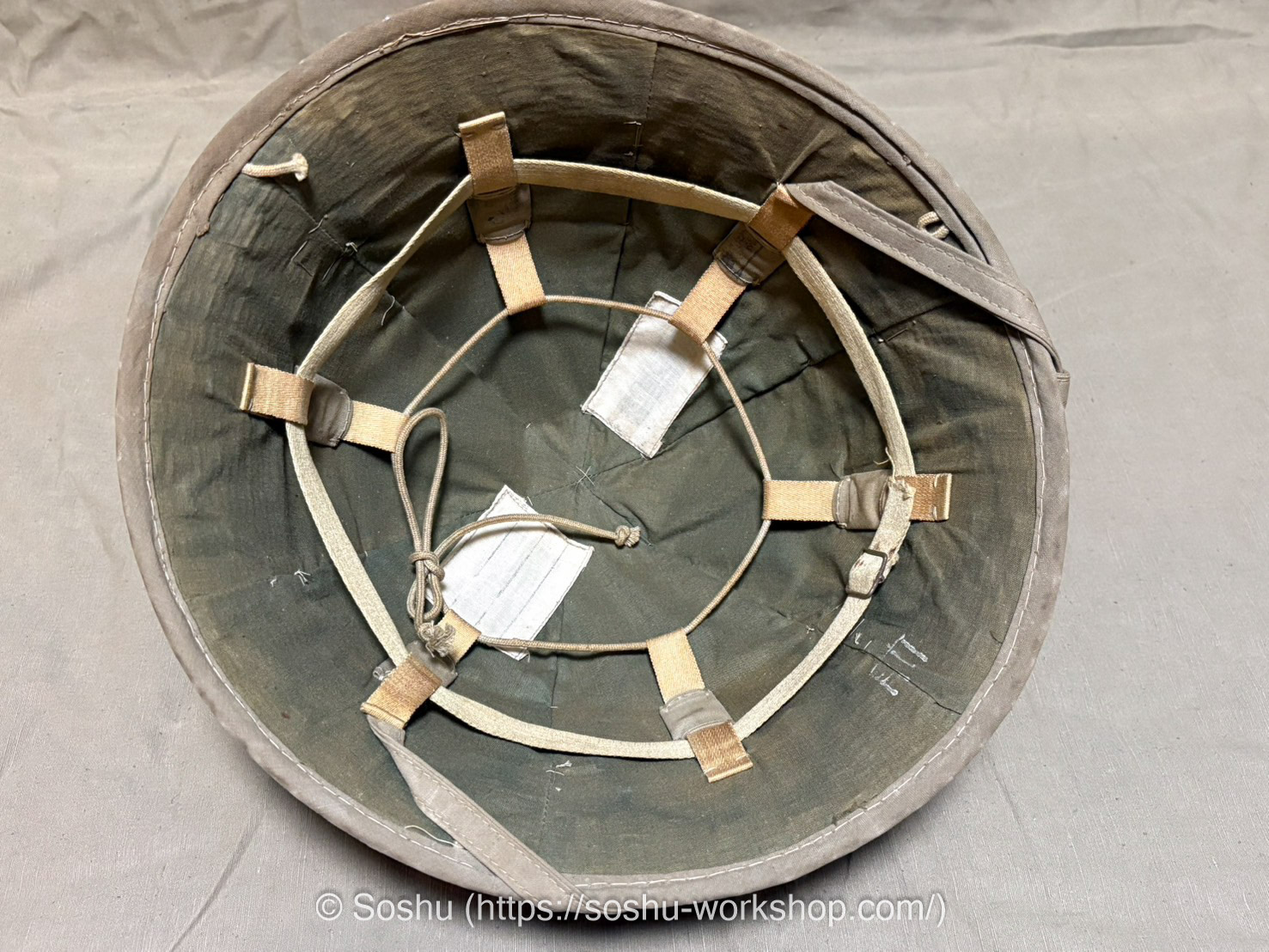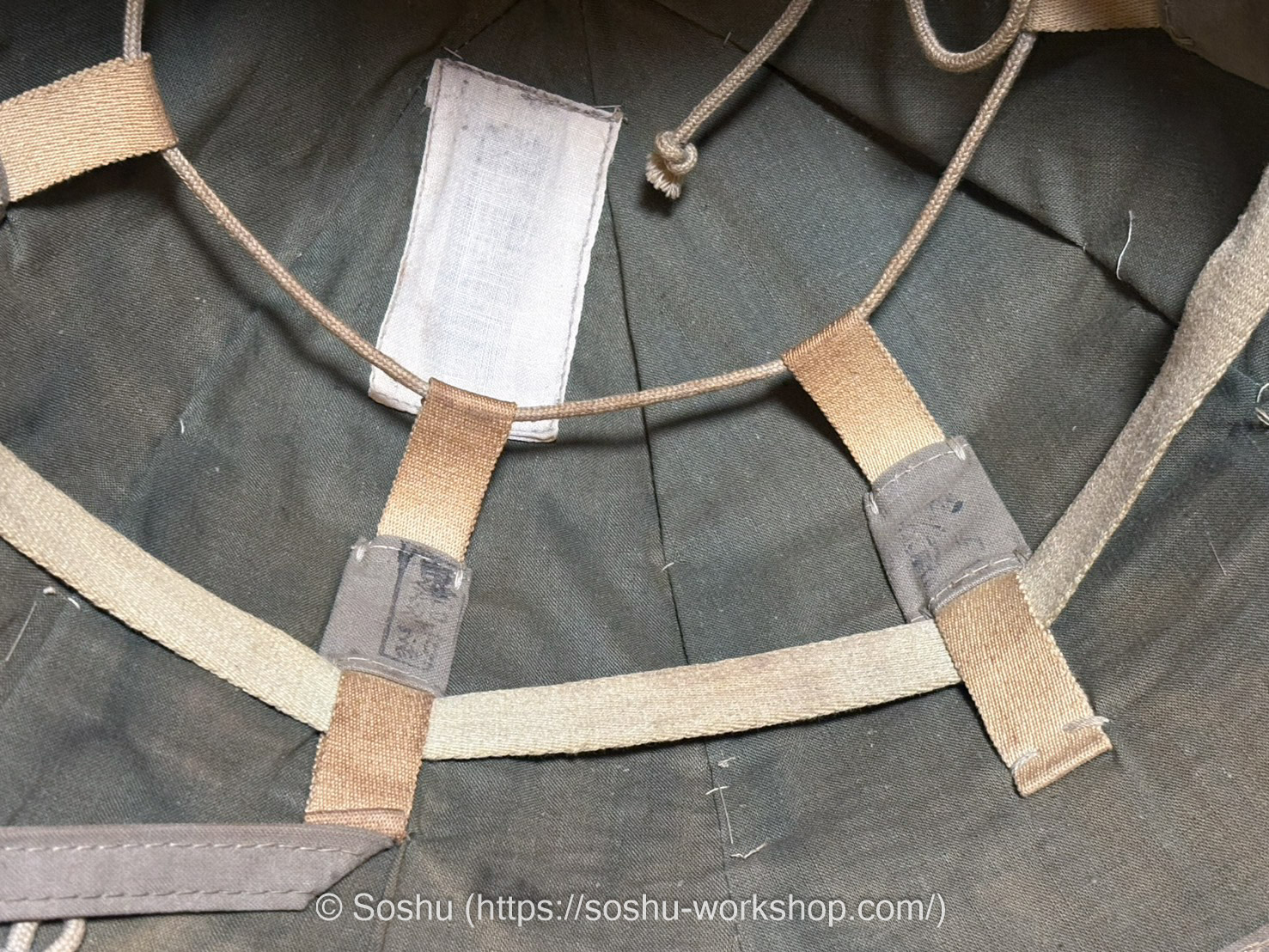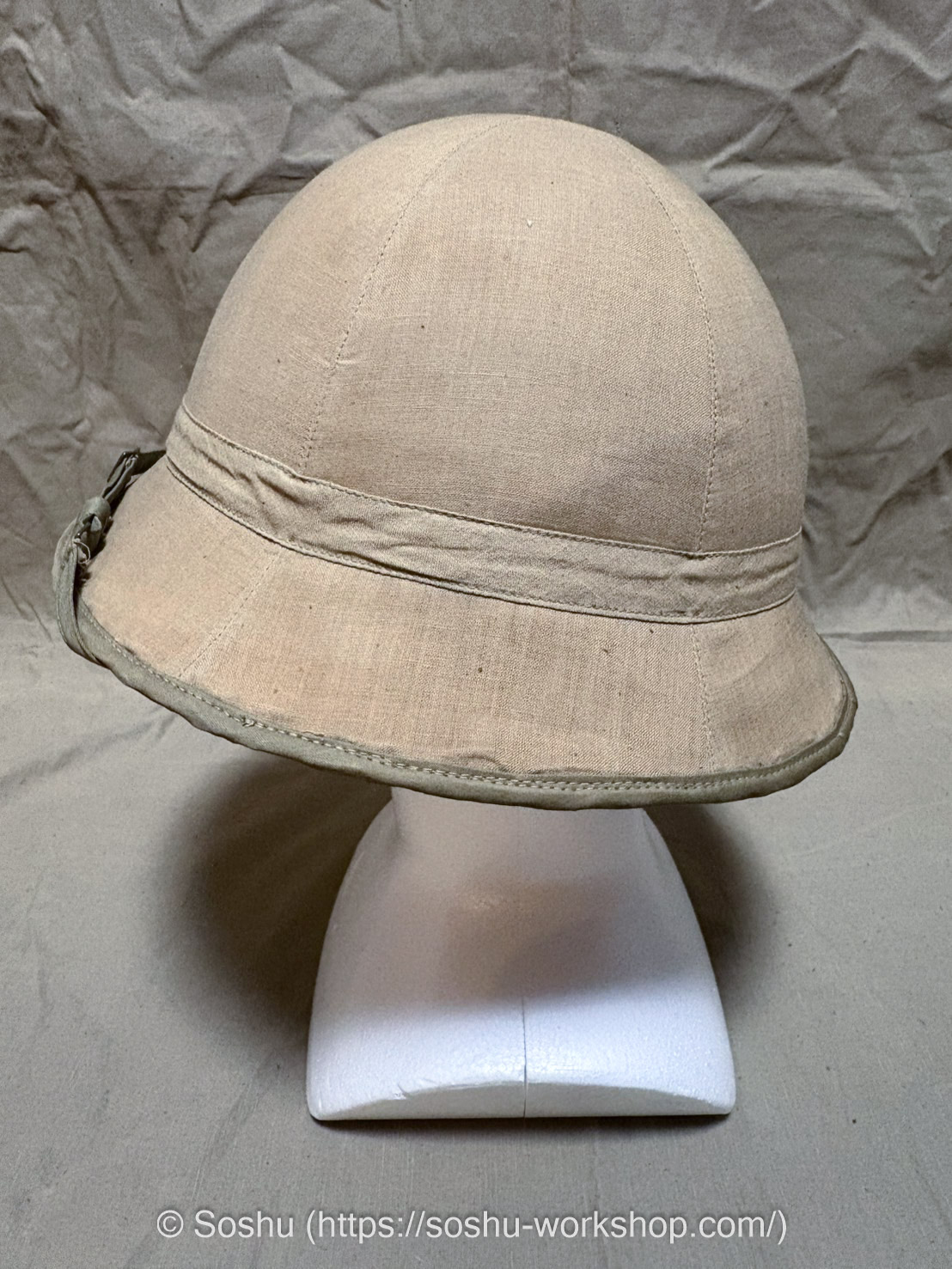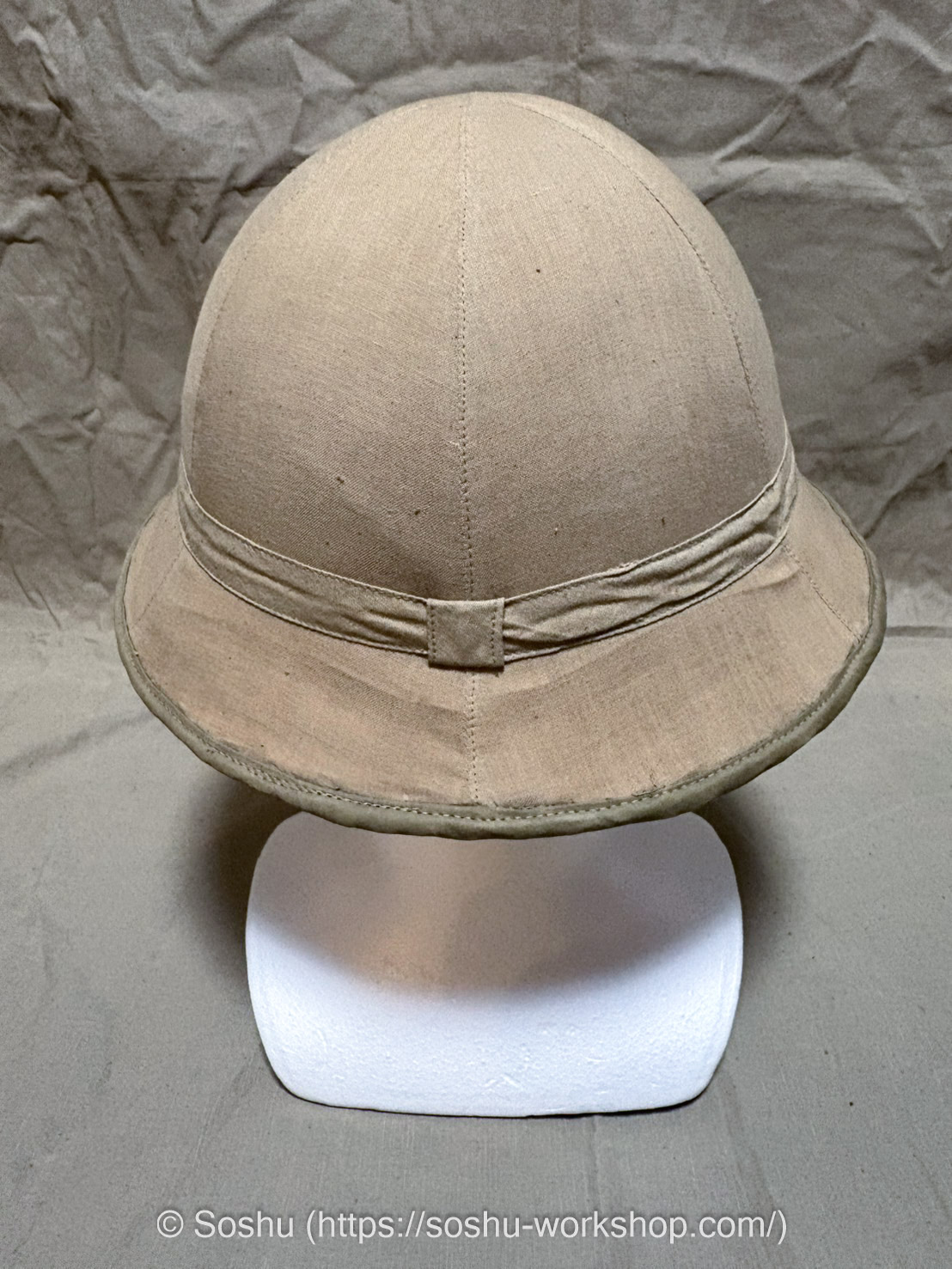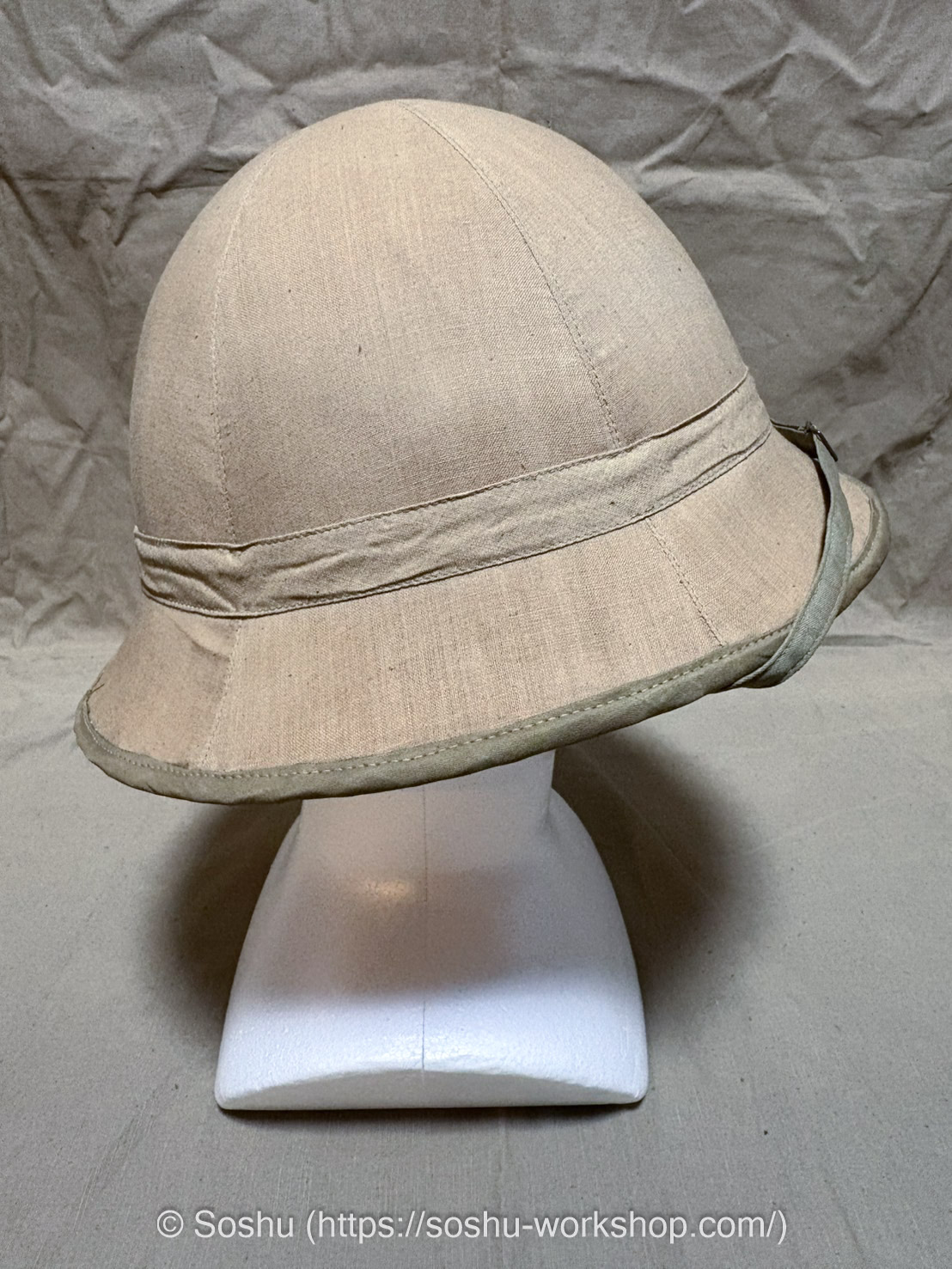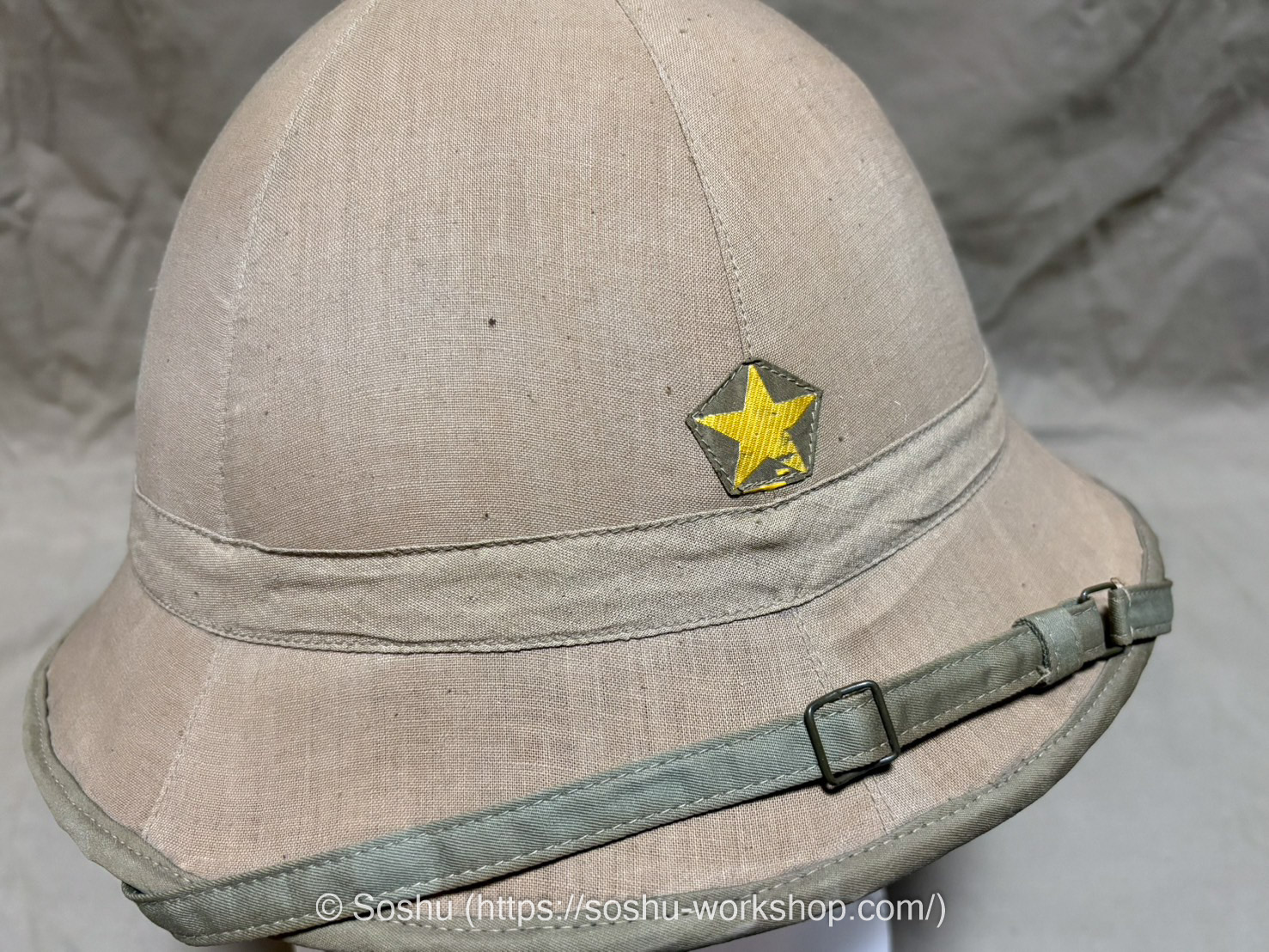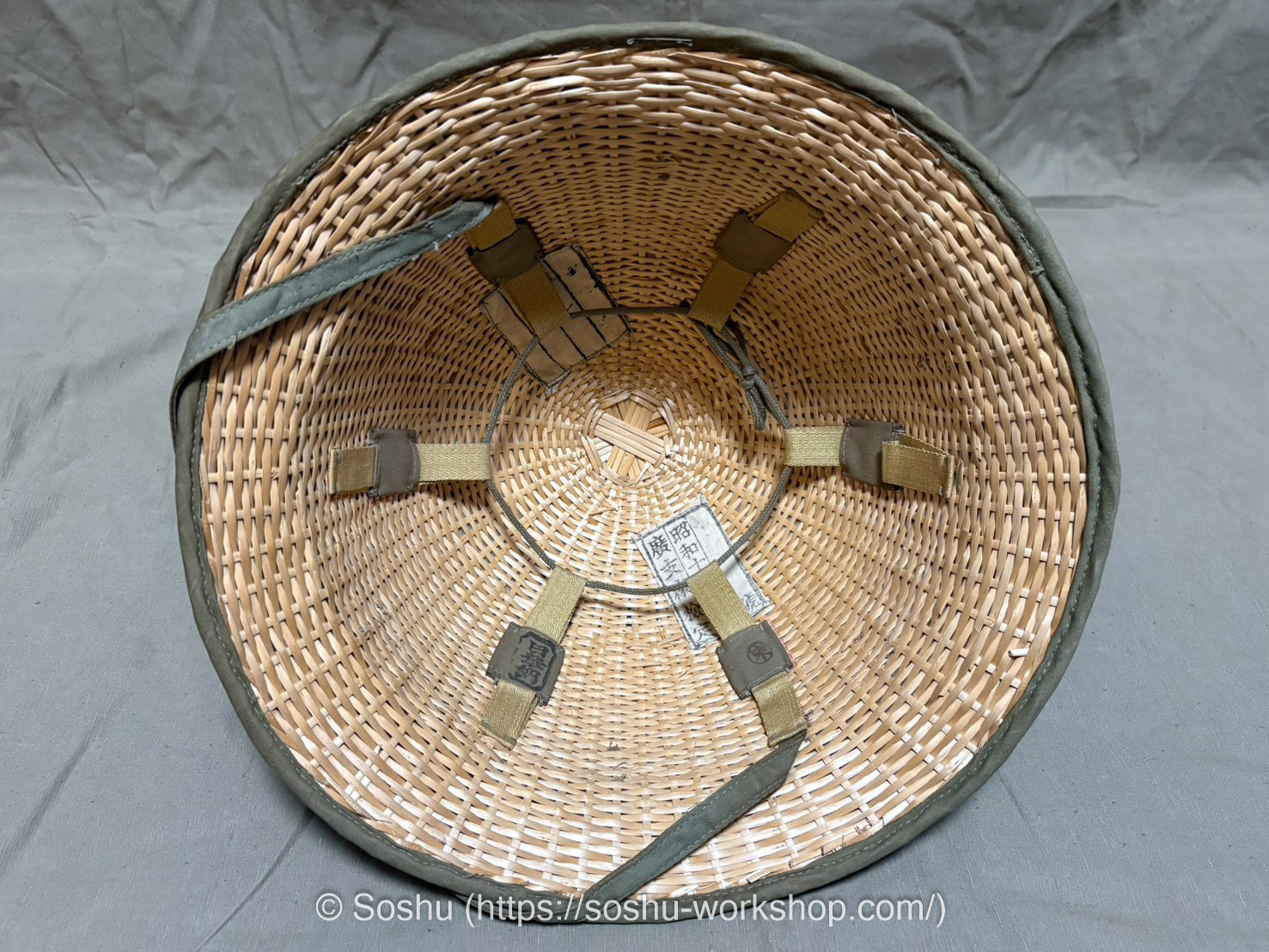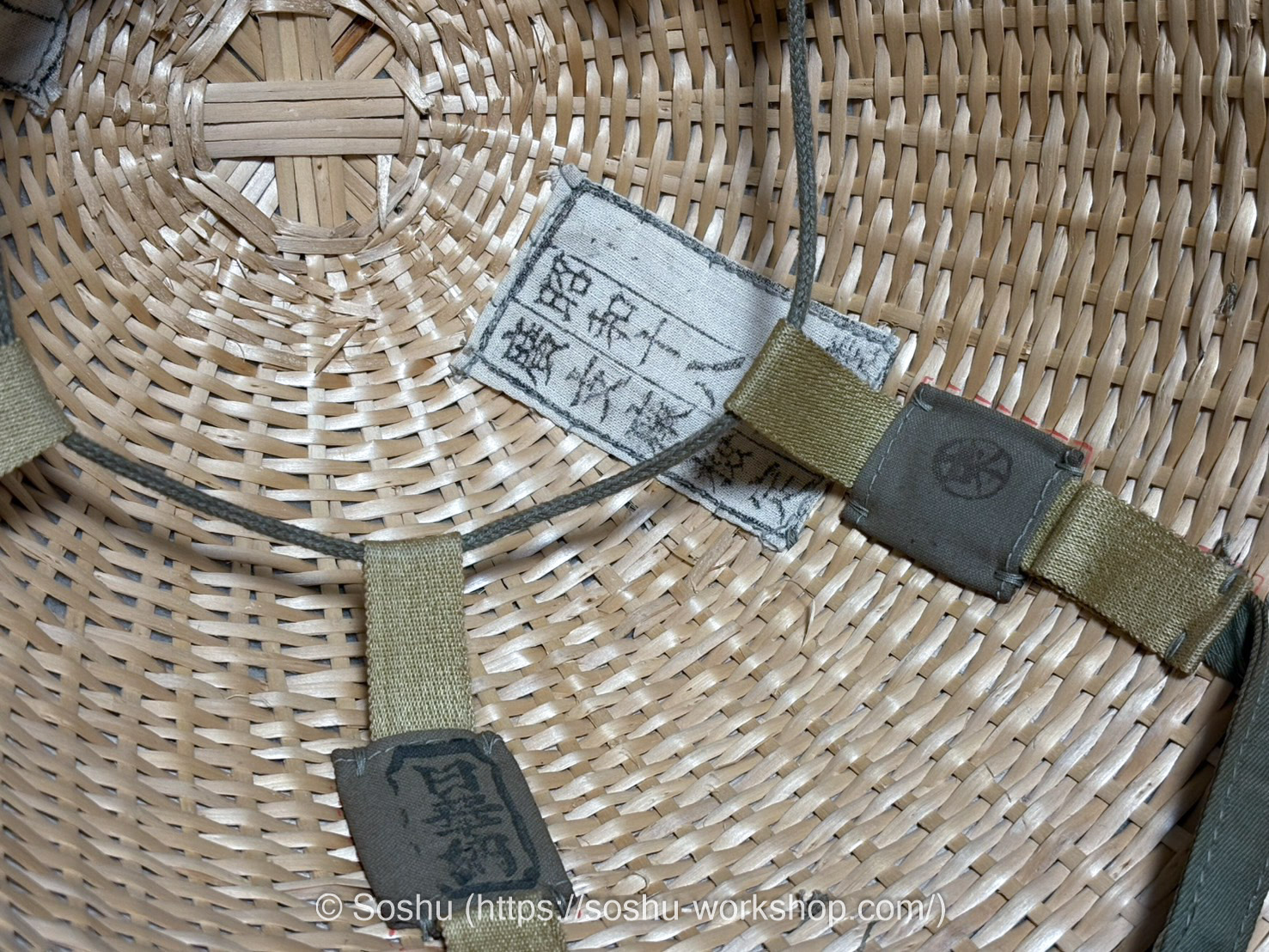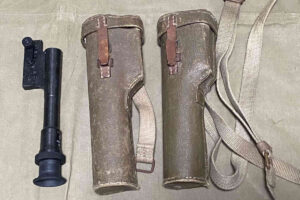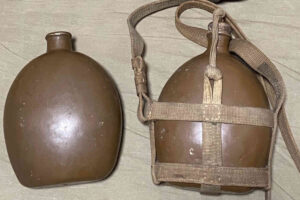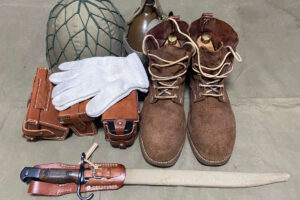The Sun Hat was classified as Tropical Clothing under Special Regional Clothing. Its specifications1 were established in March Shōwa 13 (1938) and later revised in July Shōwa 13 (1938), September Shōwa 16 (1941), and May Shōwa 18 (1943).
The Sun Hat was first standardized in Shōwa 5 (Kōki 2590 / 1930)2 as a model featuring metal star insignia and ventilation holes. Later, in Shōwa 16 (Kōki 2601 / 1941)3, a new model with woven star insignia and no ventilation holes was introduced.
However, it has long been a mystery why the term “Type 98 Sun Hat (Kyūhachi-shiki Bōshobō)” came into use, despite the fact that the standardized introduction year was clearly Shōwa 5, not Shōwa 13 (1938). Since contemporary primary sources also use the term “Sun Hat (Type 98)”, it is not merely a postwar nickname.
Within the Army Clothing Specifications Collection, the establishment of the “Sun Hat (Type 98) Specifications” is recorded under Shōwa 13 (Kōki 2598 / 1938). For this reason, I believe that the designation “Type 98” was used specifically for the ventilation-less model with woven star insignia.
Although I was only able to locate the table of contents and not the full text of the specification documents4, it appears that there were five types of Sun Hats:
- Sun Hat (Type Ro)
- Sun Hat (Lintou-made)
- Simplified Sun Hat
- Experimental Sun Hat (Type Otsu)
- Simplified Sun Hat (Type Otsu)
I have covered the Type 98 Sun Hat in a previous article as well, so please take a look at that one together with these posts.
Here, I will compare several authentic Type 98 Sun Hats made to different specifications.
Shōwa 16 (1941) issue, “Man (Manchu) 581”
This is an extremely early variant of the Sun Hat, featuring ventilation holes at the crown and on both sides. Although the fabric covering the crown vent has deteriorated and the metal is now exposed, and the chin strap has torn, this configuration is exceptionally scarce and therefore highly valuable.
A metal star insignia—of the same type used on the service cap—would originally have been attached to the front, but it has been removed. It appears that many Sun Hats had their star insignia taken off and discarded at the end of the war, making examples that still retain their original star particularly rare.
It should be noted that a pattern also exists that has only the crown vent while the side vents have already been eliminated.
Shōwa 18 issue, Army Clothing Depot
Apart from the missing original star insignia, this Sun Hat is nearly perfect—close to an unused condition. The star insignia currently attached is a dead-stock authentic woven star, which was modified and mounted in accordance with the specifications.
The mae (前) character indicating the front of the Sun Hat is also specified in detail in the official specifications, including its required size.
Inspection Stamp Illegible
Shows slight signs of use, but the original woven star insignia remains. The star has rubbed along the seams of the cap, confirming it is unquestionably authentic.
All interior straps are intact, making it complete. No inspection stamps indicating the manufacturing location or date are present, so further details are unknown.
Shōwa 18 issue, Hiroshima Army Clothing Depot,
This type retains the interior as a straw hat. The star insignia is also an original woven star, and since there are no signs of use, it is likely a dead-stock item. The absence of lining in the interior is not because it is a late-war model; similar types were manufactured around Shōwa 16 (1941).
If you look closely at the loops inside, you can see red ink marks indicating the attachment positions. These marks were applied at the time of production. According to Furutakaya, a Japanese lifestyle magazine from that era described a home-based task where women would sew the lining in place following these marks.
Footnote
- “Army Clothing Specifications Collection, Volume I / Part I: Finished Clothing / Section 4: Special Regional Clothing,” JACAR (Japan Center for Asian Historical Records), Ref. C14010251200; “Army Clothing Specifications Supplement (Third Addendum), Shōwa 18 (May–August 1943),” National Institute for Defense Studies, Ministry of Defense. ↩︎
- “Regulations on Standardization of Clothing and Equipment” JACAR (Japan Center for Asian Historical Records) Ref.C01001143600, Eishon Documents, Volume 1, Showa 5 (1930) (National Institute for Defense Studies, Ministry of Defense). ↩︎
- “Showa 5 Army Directive No. 8 Amendments” JACAR (Japan Center for Asian Historical Records) Ref.C01005254100, from July 1941 onward, “Army General Affairs (China-Manchuria-Asia) Confidential File, Unit No. 9951” (National Institute for Defense Studies, Ministry of Defense). ↩︎
- “Table of Contents: Army Clothing Specifications Collection, Volume II (Shōwa 17, October 1942),” JACAR (Japan Center for Asian Historical Records), Ref. C14010283100; “Army Clothing Specifications Collection, Volume II, Shōwa 17 (October 1942), ” National Institute for Defense Studies, Ministry of Defense. ↩︎
